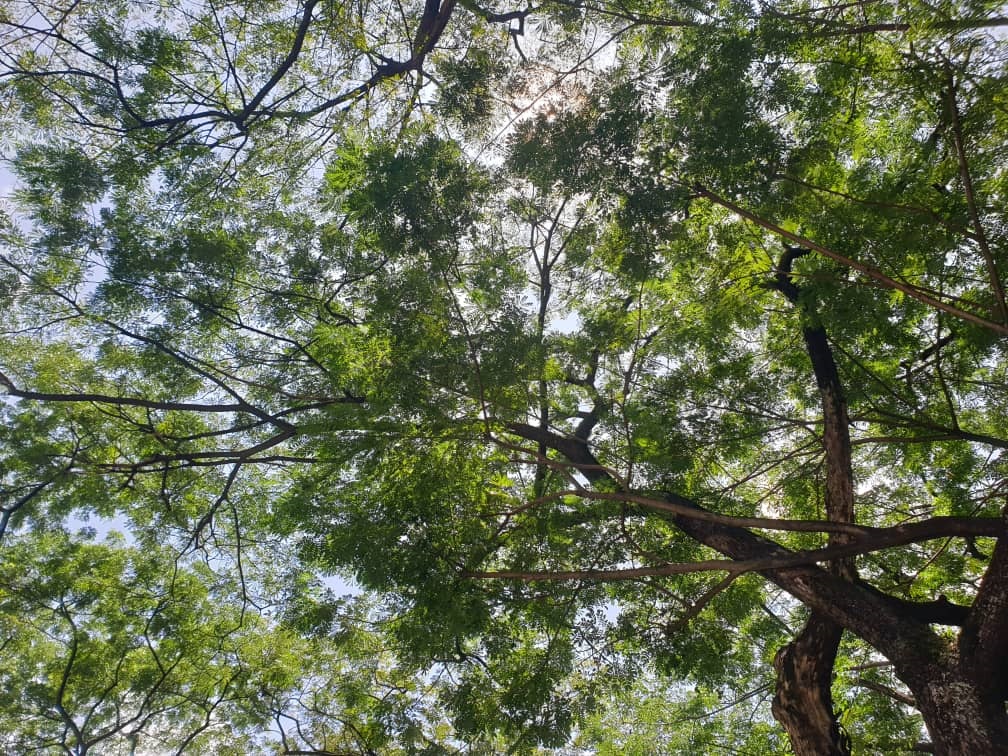
by Trailerman Sam
Throughout the test of time, trees have been used for various relieving and therapeutic purposes. Humans have created a special bond with trees that are deeply-rooted in earth’s energy force that also connects the universal force of life.
Trees that grow in green spaces such as parks and forest provide plenty of opportunities for relaxation, recreation, and physical activity. Spending time under trees or in green spaces is said to be able to reduce stress or improve one’s mood.
And why not? Trees provide shade, which can help to cool down outdoor environments during hot weather. Being in shaded areas can make outdoor activities more enjoyable and comfortable. A well-learned person sees a tree as the most spiritually evolved element on planet earth. They stand tall in a meditative state and absorb very subtle forms of energy.
Besides converting carbon dioxide into oxygen, trees also absorb any negative energy and convert it into something useful. The more firmly the trees are rooted in the earth, the higher they reach for the heavens above.
To maintain the balance of the living world, trees must co-exist with nature and humans. Who is not familiar with the good feeling that comes from a pleasant evening stroll under a row of gigantic greenery?
And who can forget the petrichor or that refreshing scent that comes after rain has reinvigorated the verdure or greenness of the majestic trees in our neighbourhood?
Even birds know this and seek refuge amongst the freshness and sanctuary of trees that also contribute to the beauty of landscapes and urban environments, not forgetting their natural beauty can also uplift spirits. But my good friend, Jeff, says a group of narrow-viewed dwellers in a so-called upscale housing area in Semenyih have been debating on the merits of the presence of trees in their habitats.
These people claim that trees attract birds that come and yak almost the whole day, giving humans no peace and their expensive vehicles get extra blobs of spots on their paintwork! Anyway, that’s Jeff’s neighbours’ problem and not Jeff’s as my friend likes birds, feathered as well as non-feathered!
Talking about trees, I’d like to dwell on the tamarind tree or Tamarindus indica. For locals, it’s that asam jawa tree that produces sourish fruits whose paste is used for cooking.
Decades after decades, long rows of monumental tamarind trees have manifested on the sides of roads in my neighbourhood in Lunas, Kedah. Standing like ancient custodians, composed and rigid, their sturdy trunks and strong branches tower over the roads. They’ve admirably withstood torrential rains and the scorching heat.
Hindu texts have indicated that Lord Krishna is said to have meditated under this sacred tree. It’s also said that the tree in question was cursed by Radhrani, a character in the theology of Vaishnava traditions. Radhrani is also considered as the original Goddess or Shakti.
Legend has it that one day when she was strolling bare foot to meet Lord Krishna, she stepped on the thick skin of a ripened tamarind fruit and it somehow cut her foot. This delayed her journey to meet Lord Krishna. She then cursed the tree that its fruits would never ripen! So, could that be why its fruits are so masam?
Tamarind tree leaves fold up at night fall. Hence, the belief that these trees have also gone to sleep! Among many Indians in Malaysia and elsewhere, there’s a belief that ghosts like to reside in tamarind trees.
Call it a grandma or grandpa’s tale, or even among some young people, they’d strongly advise never to sleep under a tamarind tree. Or else disaster might befall the sleeper!
Like many cultures around the world, Indians also attribute lot of things to the tamarind tree besides the neem or veppamaram (neem) tree. For some strange reason, I find that the tamarind tree is usually found in Hindu cemeteries. Maybe that’s why many story-tellers will readily tell you that the tamarind tree has that “extra”, especially at night. Makes us wonder.
Trailerman Sam writes from Lunas, Kedah where he observes what’s happening in the country and beyond. The views expressed here are those of the writer and do not necessarily represent that of The Weekly-Echo.
WE